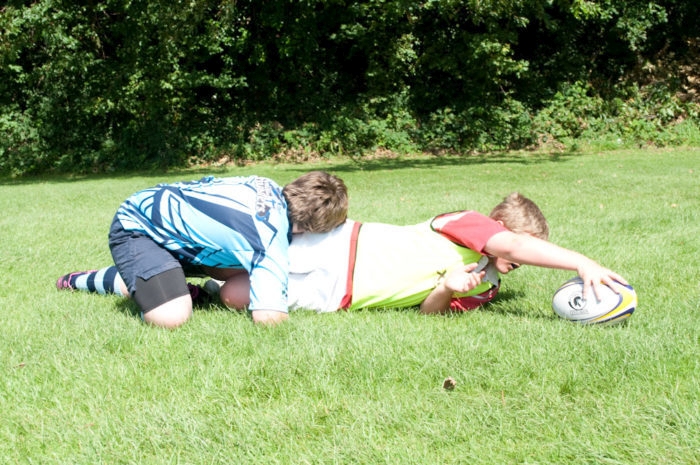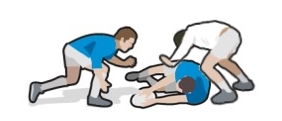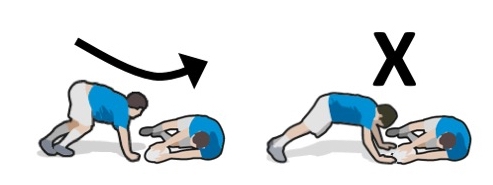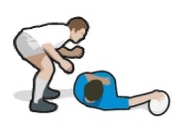Six tips to winning quicker ruck ball
Rucking & Maulingby Dan Cottrell
1. Get the ball carrier working harder
- Train the players to stay on their feet for longer in the tackle situation. A player on the floor has no rights to the ball. However, often players too easily fall to the ground, thus allowing the opposition more time to regroup and steal the ball.

A player on their feet can also move forward, thus giving a better target for attackers. Rucks are easier if the ball is moving forward.
It is helpful if the ball carrier has a wider stance before the tackler hits them, anticipating taking the hit. It's a difficult skill to get right straight away and improvements can only happen with the help of drills and constant practice.
- Once the player has been tackled, get them to place the ball as far back from their body as possible. This helps in two ways. First, the opposition is less likely to be able to retrieve the ball immediately or slow it down by getting their hands to it. Second, the ball is easier to clear over, leaving it out for the scrum half to pass away.
2. Focus on clearing out (cleaning out) one man from the ruck
Instead of just arriving at the ruck, each player should be targeting one defender, and one defender only, to clear out from the ruck. The player should arrive with their:

- Heads up and eyes open.
- "Spine in line" with the direction of play.
- Shoulders and hips lower than the defender's shoulders and hips.
3. Arrive from depth, not at speed
Instead of being there first, try getting the players to run in from right behind the contact area. If they are arriving from depth then they can make decisions on where to hit. For instance, they can clear defenders on either side of the ruck.
A deeper runner arriving at the ruck may arrive a little later, but they are more likely to be more effective at clearing out the defenders because they are moving in the right direction.
4. Two hands on the ground to lower and square the shoulders

On arrival at the ruck, some players cannot make much difference because they arrive, dip and push. Train the players to touch the ground with both hands at the same time just before the contact.
If their heads are up looking for the point of contact, then they should be in a great position to give all their power to the ruck. Both hands together square the shoulders, making the spine in line and the force more effective.
The player needs to be active, going forward and ready to rise up. If they are overextended, then they will never be able to recover and take their hands off the ground.
5. New Zealand tips
Two players are better than one, and the New Zealanders of old used to bind together when they arrived at a ruck. A wider force, with the power of two players proved a good way of sweeping opposition players away from the contact situation.
This is a good skill for better players, perhaps if the team is nimble but not as big as the opposition. Again the players should be arriving from depth, the player first there looking for another player to bind onto.
Both players should have their heads up, looking "through their eyebrows" and their outside arms wide to sweep up the opposition as they step over the ball.
The extension of this technique that the two players don't bind together, but drive out one opposition player over the ball, each taking one side of the defender.
6. Better bag work drills
Rucking is often practised in rugby drills using contact bags or shields. Better drills challenge the players by placing the bags at awkward heights, or providing specific targets.
- If there are letters on the bag, such as the manufacturer's name or logo, get players to target specific letters. This means they have to look for the point of contact rather than just hitting during a drill.
- Placing two bags just a foot apart has the same effect. Players need to hit the bags with both shoulders and with their heads up, so the head goes through the gap.
- Put the bags almost touching the ground. The player needs to get themselves as low as possible to clear the bag. They will need to get the shoulders above hips on every hit, but cannot afford to be lazy about arriving too high.
- Have a player behind the bag or shield holder in the drill. Here the rucker has to hit the bag with the right skills and technique to drive the bag holder and their support backwards.
Newsletter Sign Up
Coaches Testimonials

Gerald Kearney, Downtown Las Vegas Soccer Club

Paul Butler, Florida, USA

Rick Shields, Springboro, USA

Tony Green, Pierrefonds Titans, Quebec, Canada
Subscribe Today
Be a more effective, more successful rugby coach
In a recent survey 89% of subscribers said Rugby Coach Weekly makes them more confident, 91% said Rugby Coach Weekly makes them a more effective coach and 93% said Rugby Coach Weekly makes them more inspired.
Get Weekly Inspiration
All the latest techniques and approaches
Rugby Coach Weekly offers proven and easy to use rugby drills, coaching sessions, practice plans, small-sided games, warm-ups, training tips and advice.
We've been at the cutting edge of rugby coaching since we launched in 2005, creating resources for the grassroots youth coach, following best practice from around the world and insights from the professional game.














